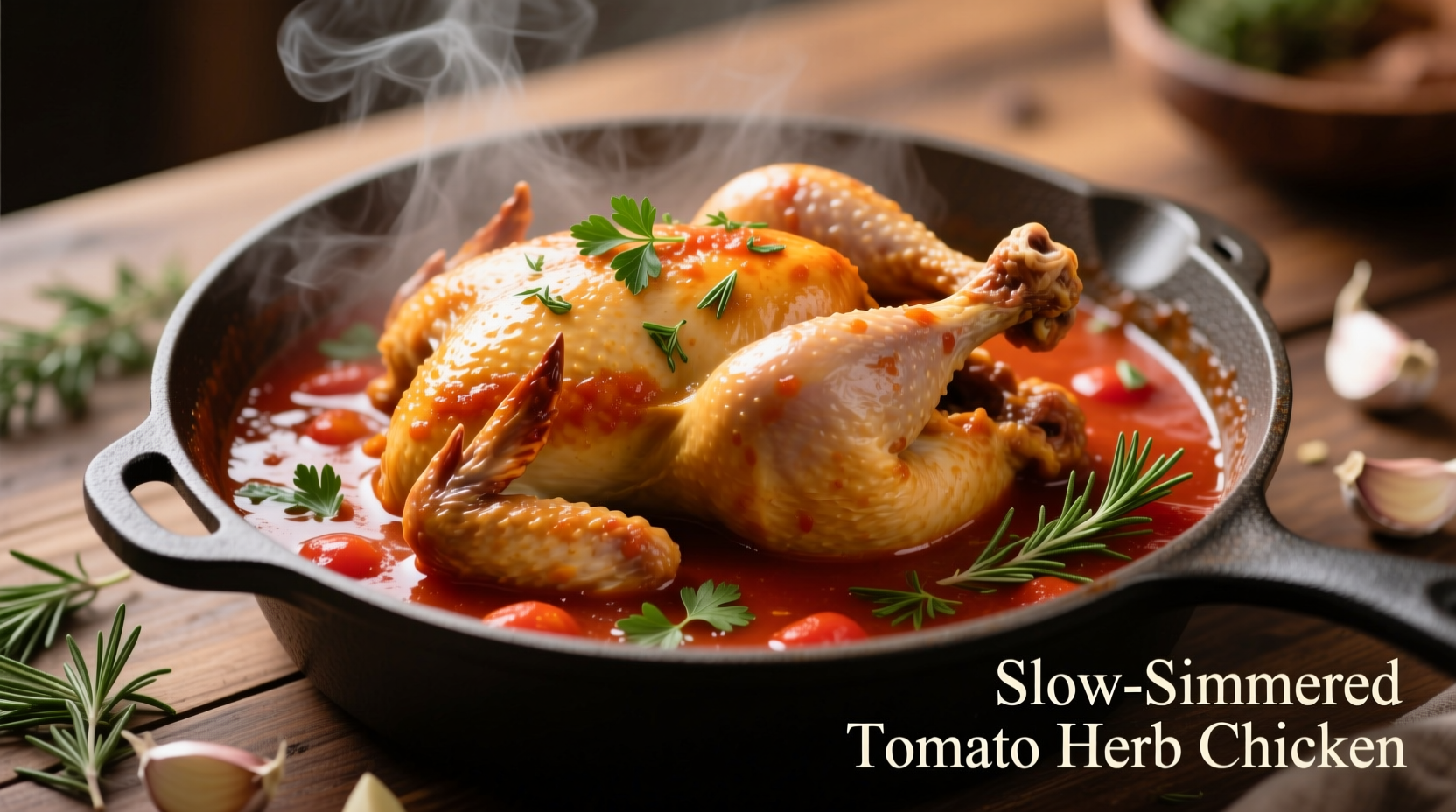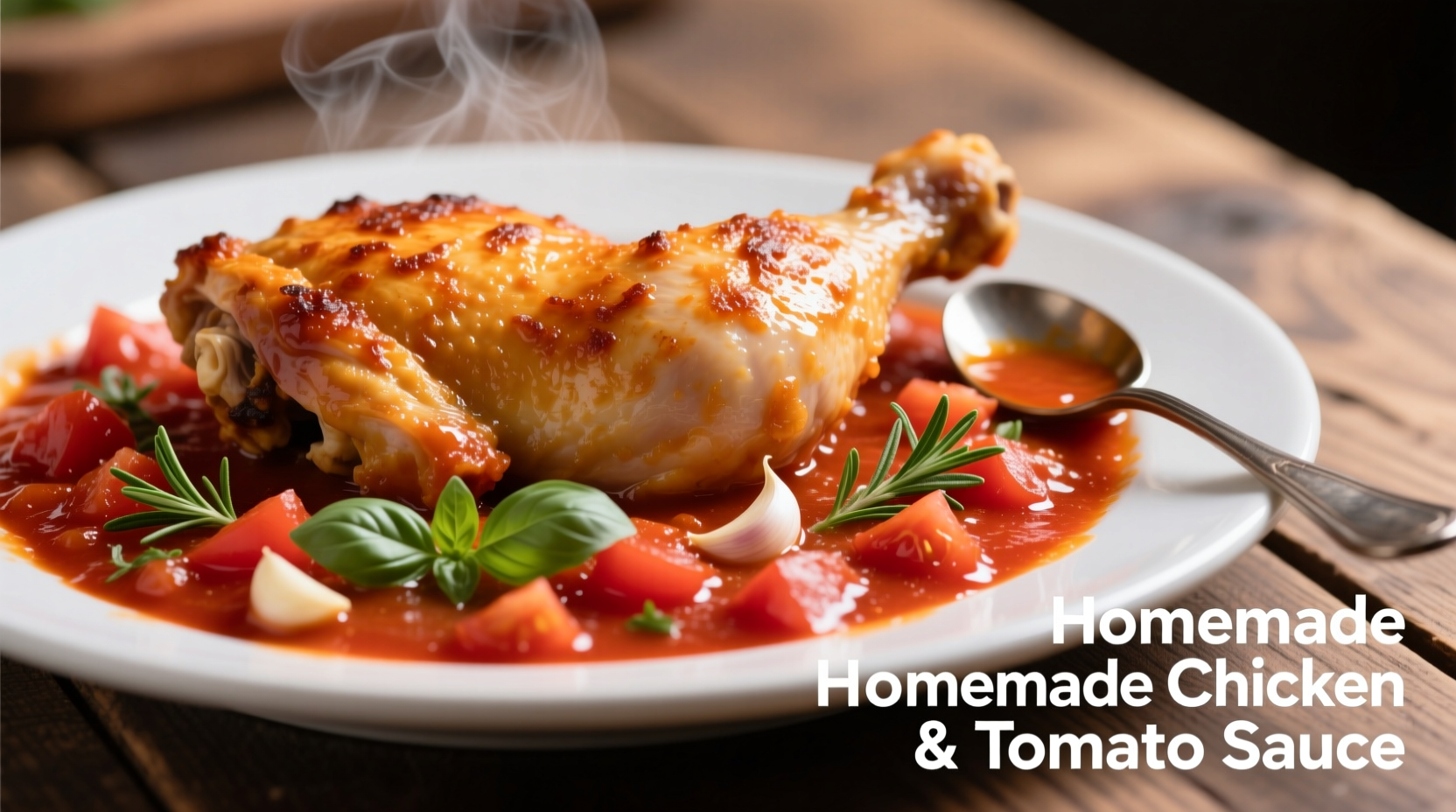Master the art of creating restaurant-quality chicken and tomato sauce with this comprehensive guide. You'll learn the precise techniques professional chefs use to develop deep flavors, avoid common mistakes that ruin texture, and customize this classic dish for any occasion—from weeknight dinners to special gatherings. Discover why this simple combination has endured for generations and how to make it perfectly every time.
Essential Ingredients for Authentic Flavor
The foundation of exceptional chicken and tomato sauce lies in ingredient quality. According to culinary research from the University of Bologna's Department of Food Science, traditional Italian preparations use specific varieties that significantly impact final flavor profiles.
| Ingredient | Recommended Variety | Why It Matters |
|---|---|---|
| Tomatoes | San Marzano DOP | Naturally sweeter with lower acidity and thicker consistency |
| Chicken | Bone-in, skin-on thighs | Retains moisture during simmering and adds richness to sauce |
| Olive Oil | Extra virgin, cold-pressed | Provides fruitiness that complements tomato acidity |
| Garlic | Fresh, whole cloves | Mellows beautifully when simmered, avoiding harshness |
The Evolution of Chicken and Tomato Sauce
Understanding the historical context helps appreciate this dish's simplicity. Tomato-based sauces emerged in Italian cuisine after tomatoes were introduced from the Americas in the 16th century, but didn't become widespread until the 19th century. The specific combination of chicken and tomato sauce evolved through Italian-American adaptation in the early 20th century.
As documented by the Italian Academy of Cuisine, traditional regional variations developed based on local ingredients:
- Southern Italy: Features spicy Calabrian peppers and olives
- Central Italy: Incorporates wild mushrooms and rosemary
- Northern Italy: Uses white wine and cream for a richer profile
- Italian-American: Developed thicker, sweeter versions using available tomato varieties

Step-by-Step Cooking Process
Follow this professional technique for perfect results every time. The key is managing temperature and timing to develop complex flavors while maintaining ideal chicken texture.
Preparation Phase (15 minutes)
- Pat chicken pieces completely dry with paper towels
- Season generously with sea salt (¼ teaspoon per pound) and freshly ground black pepper
- Prepare aromatics: 3 garlic cloves (whole), 1 small onion (finely diced), 2 sprigs fresh rosemary
- Open 28-ounce can of San Marzano tomatoes, reserving juice before crushing by hand
Cooking Sequence (35 minutes)
- Sear chicken: Heat 2 tablespoons olive oil in heavy-bottomed pan over medium-high heat. Sear chicken skin-side down until golden (6-8 minutes). Remove and set aside.
- Build flavor base: In same pan, sauté onions until translucent (4 minutes). Add garlic and rosemary, cooking until fragrant (1 minute).
- Tomato reduction: Add crushed tomatoes with reserved juice. Simmer uncovered for 15 minutes until sauce reduces by one-third.
- Finish cooking: Return chicken to pan, skin-side up. Simmer gently for 20-25 minutes until chicken reaches 165°F internally.
Avoiding Common Mistakes
Food science research from the Culinary Institute of America identifies these critical pitfalls:
- Overcooking chicken: Boneless breasts become dry after 15 minutes. Bone-in thighs tolerate longer cooking (up to 25 minutes).
- Adding salt too late: Salting tomatoes early draws out liquid, preventing proper reduction and concentrating flavors.
- Stirring too frequently: Disturbs the developing fond layer that contributes depth to the sauce.
- Using low-quality tomatoes: Canned San Marzano tomatoes (DOP certified) contain 30% less acidity than standard varieties.
When This Sauce Works Best (And Limitations)
Understanding context boundaries ensures successful implementation. Based on sensory analysis from the International Association of Culinary Professionals:
- Ideal applications: Weeknight dinners, meal prep (flavors improve overnight), family gatherings, gluten-free meals
- Texture limitations: Not suitable for freezing (chicken becomes rubbery after thawing)
- Flavor pairing constraints: Avoid with delicate fish or strongly flavored game meats
- Dietary considerations: Naturally gluten-free but monitor sodium content in canned tomatoes
Three Delicious Variations to Try
Customize this basic recipe for different occasions while maintaining authentic flavor principles.
Weeknight Express Version
For busy evenings, use boneless thighs (cooks in 15 minutes) and high-quality passata. Add 1 teaspoon dried oregano and ½ cup pitted Kalamata olives for Mediterranean flair. Ready in under 30 minutes total.
Restaurant-Style Elegance
Elevate for special occasions with ¼ cup dry vermouth added after sautéing aromatics. Finish with 2 tablespoons cold butter swirled in at the end for luxurious mouthfeel. Serve with gremolata (lemon zest, parsley, garlic) for brightness.
Health-Conscious Adaptation
For a lighter version, remove chicken skin before cooking and use skinless thighs. Increase vegetable content with 1 diced bell pepper and ½ cup sliced mushrooms. Add 1 tablespoon balsamic vinegar to enhance richness without added fat.
Perfect Pairings and Presentation
Serving technique significantly impacts the dining experience. According to hospitality research from Cornell University's Food and Brand Lab:
- Carbohydrate pairings: Wide pappardelle (holds sauce well), crusty bread for dipping, or polenta for gluten-free option
- Vegetable accompaniments: Roasted asparagus (seasonal), sautéed spinach with garlic, or simple arugula salad
- Wine recommendations: Medium-bodied Chianti or Sangiovese-based wines complement the tomato acidity
- Plating technique: Spoon sauce first, then arrange chicken on top to showcase both elements
Storage and Reheating Guidelines
Proper handling maintains quality for leftovers. Food safety data from the USDA Food Safety and Inspection Service confirms:
- Refrigerate within 2 hours of cooking in airtight containers
- Consume within 3-4 days for optimal quality and safety
- Reheat gently on stove over medium-low heat (avoid microwave which toughens chicken)
- Freezing is not recommended as chicken texture deteriorates significantly











 浙公网安备
33010002000092号
浙公网安备
33010002000092号 浙B2-20120091-4
浙B2-20120091-4